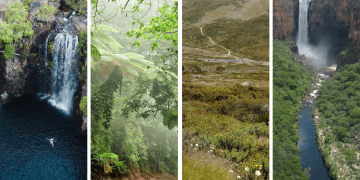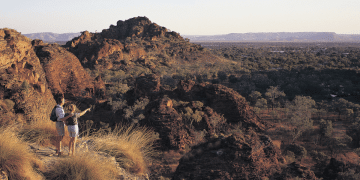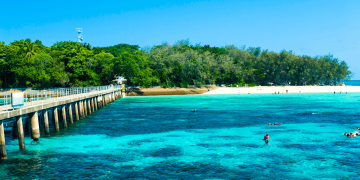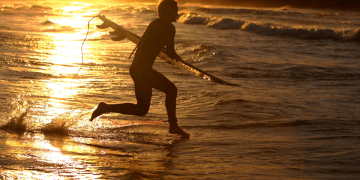Deep Dive: Guide to Whale Watching in Australia
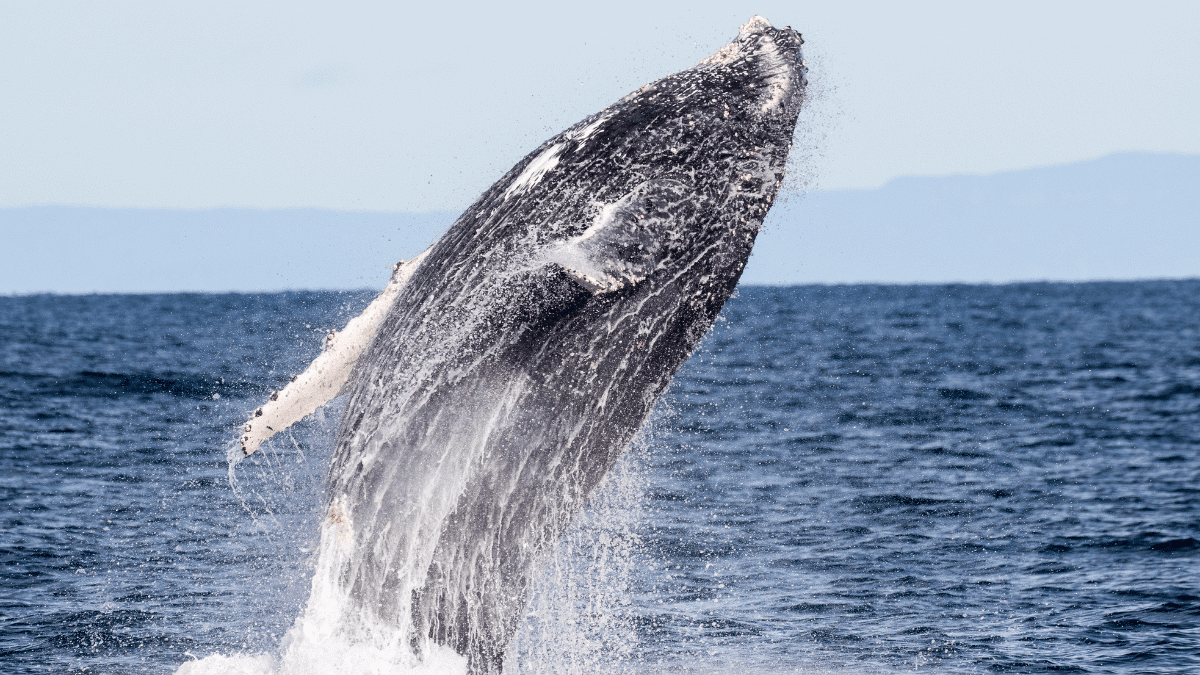
Thousands of whales travel Australia’s breathtaking coast between May and November, producing one of the most amazing natural displays on Earth. Whale watching in Australia is an amazing experience regardless of your interests—nature, the sea, or just a different approach to enjoy the great outdoors.
From the windy cliffs of New South Wales to the glistening clean seas of Western Australia, we have created a comprehensive guide to assist with your ideal whale watching tour planning. Dive in to learn where to go, when to visit, what to anticipate, and how to maximize your meeting with these mild giants.
Why Whale Watching in Australia?
Australia has one of the world’s longest whale migration paths showered upon it. Many species, including humpbacks, southern rights, minkes, and even the elusive blue whale, find ideal breeding ground and rest place in the warm seas around the continent.
Whale watching here celebrates marine life intertwined into our coastal culture, not only a tourist pastime given the more than 45 different whale species visiting our coastlines.
When is the Best Time for Whale Watching?
The Australian whale watching season typically spans from May to November, depending on the region:
- May–July: Northbound migration – whales head to warmer waters to breed.
- August–October: Southbound return – mothers and calves make their way back to Antarctic feeding grounds.
Different states have different peaks:
- NSW & QLD: June to October
- VIC & SA: May to October
- WA: June to December
- TAS: May to July and again from September to December
Top Whale Watching Hotspots in Australia
1. Hervey Bay, Queensland
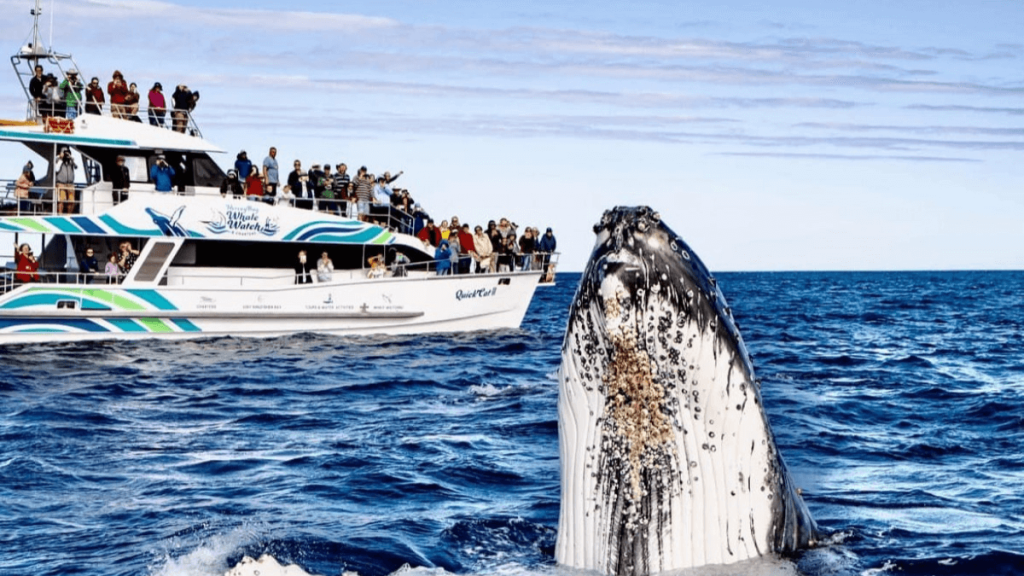
Source: Hervey Bay Whale Watch
Known as the whale watching capital of Australia, Hervey Bay is a must-visit. It’s one of the few places in the world where whales stop and play, thanks to its protected waters. Humpbacks linger here with their calves, often putting on acrobatic displays.
- Best time: July to November
- Top tours: Hervey Bay Whale Watch, Spirit of Hervey Bay
2. Jervis Bay, New South Wales
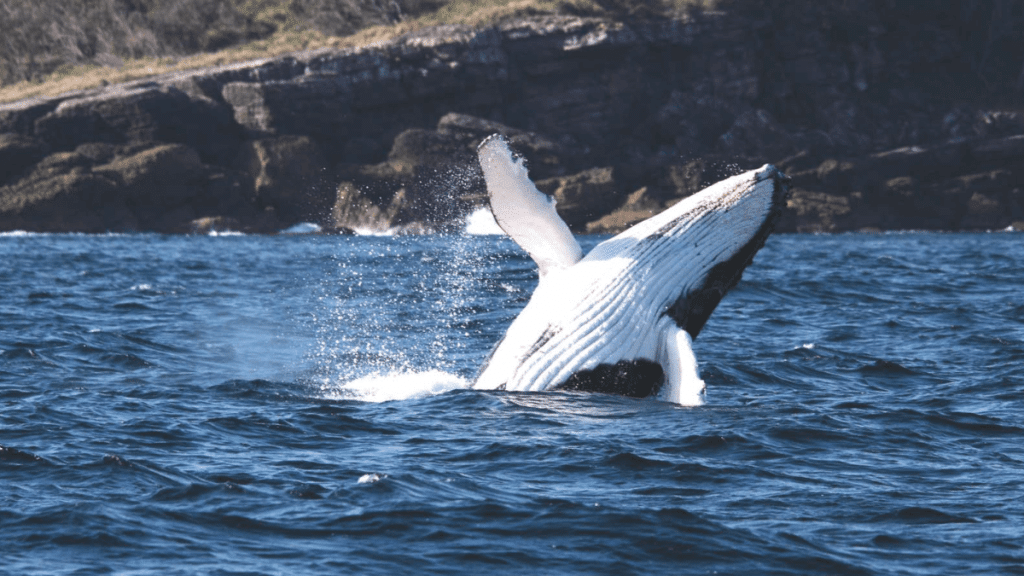
Source: Jervis Bay Wild
Just three hours from Sydney, Jervis Bay offers some of the clearest waters on the east coast and front-row seats to the migration route. Sightings from cliffs or boat tours are common, with humpbacks often breaching close to shore.
- Best time: June to November
- Top tours: Jervis Bay Wild, Dolphin Watch Cruises
3. Albany, Western Australia
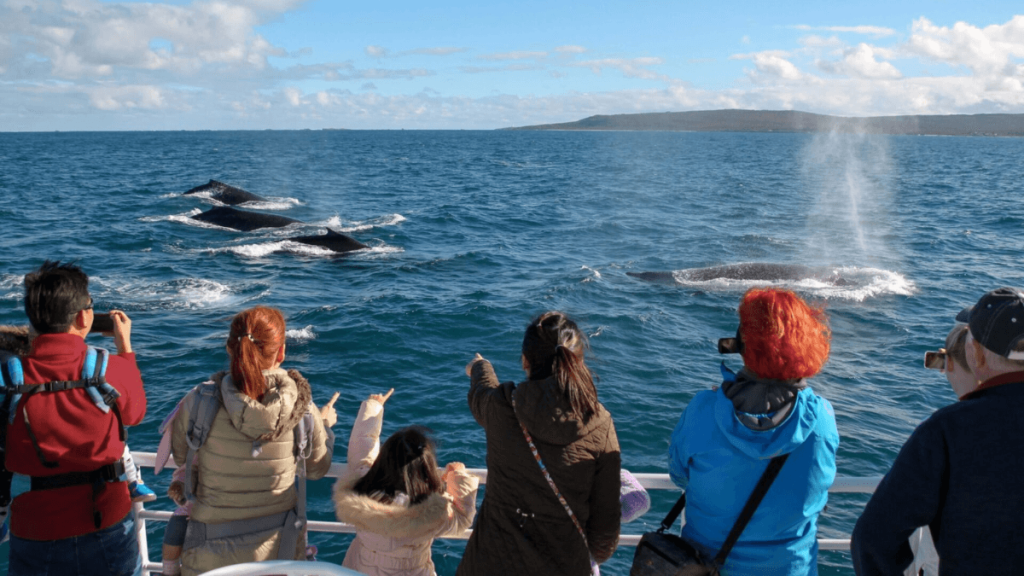
Source: Legend Charters
Albany has a rich whaling history (it was once home to the last operating whaling station in Australia), but today it’s a conservation haven. Southern right whales and humpbacks are commonly seen resting in the calm bays.
- Best time: June to October
- Top tours: Albany Whale Tours, Legend Charters
4. Victor Harbor, South Australia
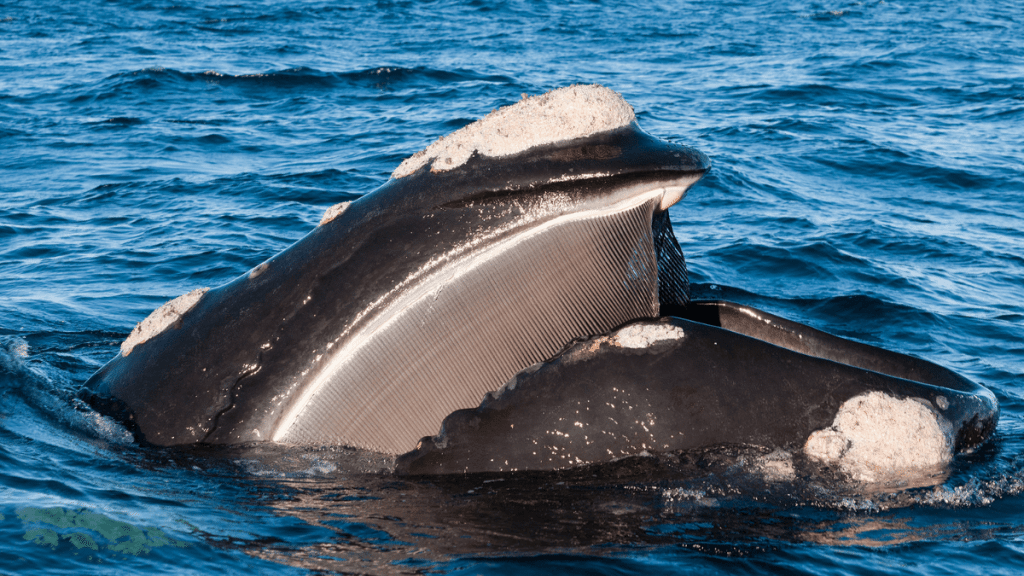
Source: The Big Duck Boat Tours
Only an hour’s drive from Adelaide, Victor Harbor is one of the best spots to see southern right whales from land. The Encounter Bay lookout points offer brilliant photo ops.
- Best time: May to October
- Top tours: Big Duck Boat Tours
5. Warrnambool, Victoria
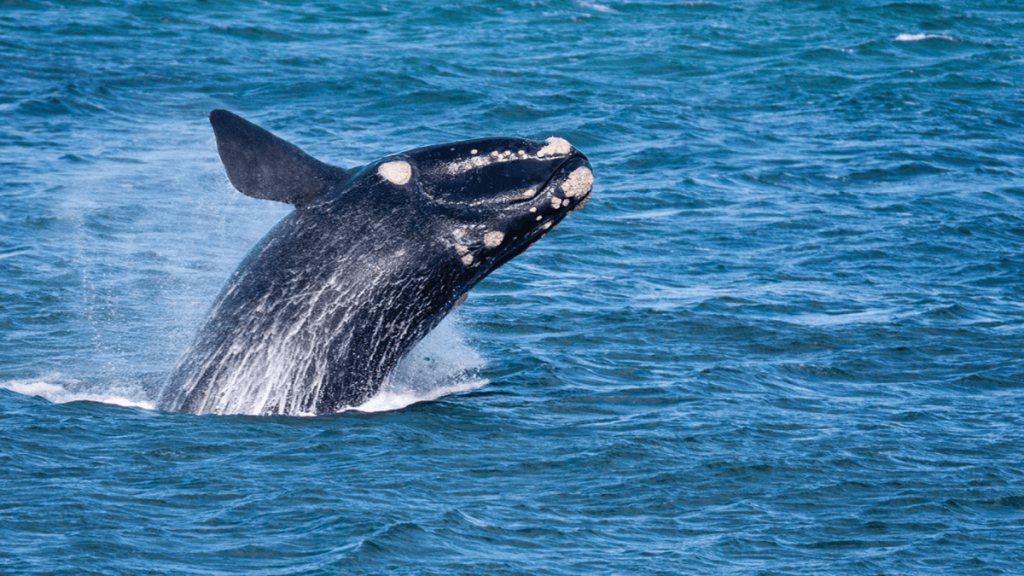
Source: Warrnambool City Council
Set along the spectacular Great Ocean Road, Warrnambool is famous for its Logans Beach Whale Nursery. Southern right whales come within 100 metres of the shore to calve.
- Best time: June to September
- What you’ll see: Southern right whales
- Top Viewing: Logans Beach Whale Nursery
6. Broome, Western Australia
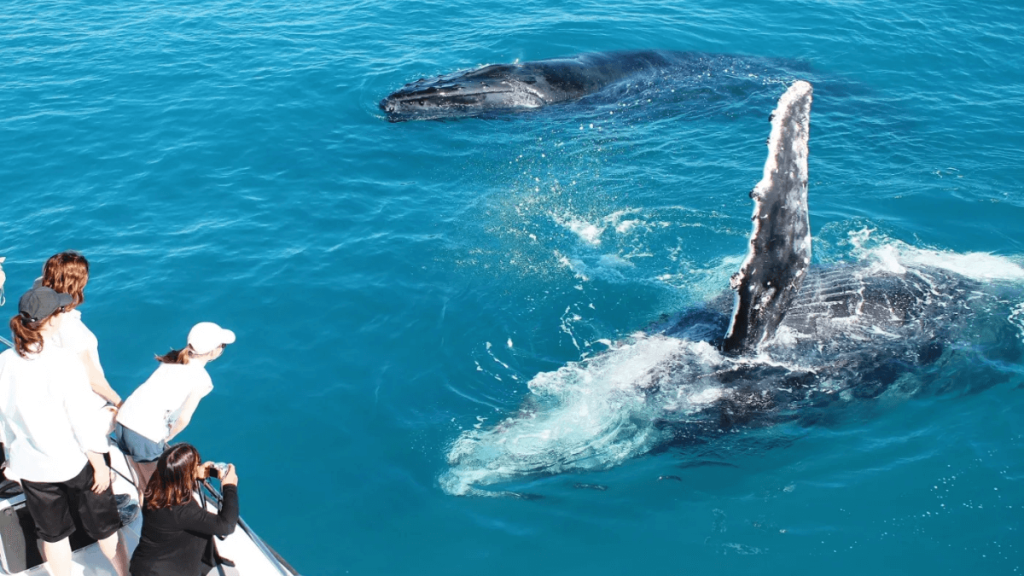
Source: Broome Whale Watching
Want something off the beaten path? Broome offers unique whale watching experiences with smaller tour groups, vibrant red cliffs, and clear turquoise waters.
- Best time: July to September
- Top tours: Broome Whale Watching, Absolute Ocean Charters
7. Bruny Island, Tasmania
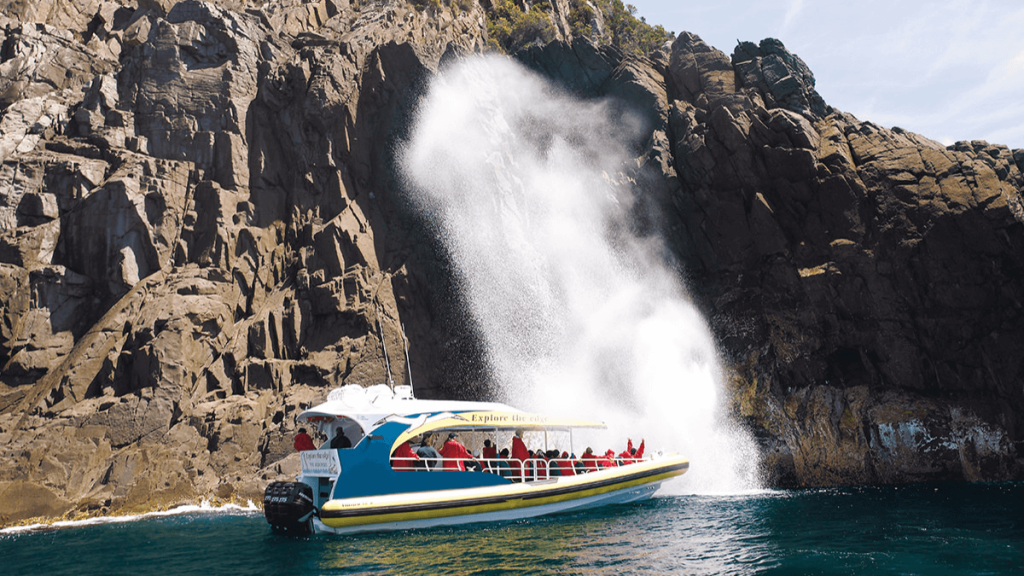
Source: Bruny Island Cruises
Tasmania’s wild, rugged coastline is an underrated gem for whale lovers. Bruny Island offers sightings of both humpbacks and southern rights, and sometimes even orcas.
- Best time: May to July, September to December
- Top tours: Bruny Island Cruises
What to Expect on a Whale Watching Tour
Most whale watching tours in Australia last between 2–4 hours and are led by experienced marine guides who share fascinating insights into whale behaviour and conservation.
Here’s what a typical tour includes:
- Safety briefing and gear (life jackets, spray jackets)
- Aboard a boat or catamaran with panoramic viewing
- Live commentary on marine species and geography
- Whale sighting guarantee (some offer a free return trip if you don’t see any whales)
Common sightings include:
- Humpback whales breaching
- Tail and fin slapping
- Spy-hopping (whales poking their heads above water)
- Mother and calf interactions
Some premium tours also offer underwater hydrophones so you can listen to whale songs live.
Tips for an Amazing Whale Watching Experience
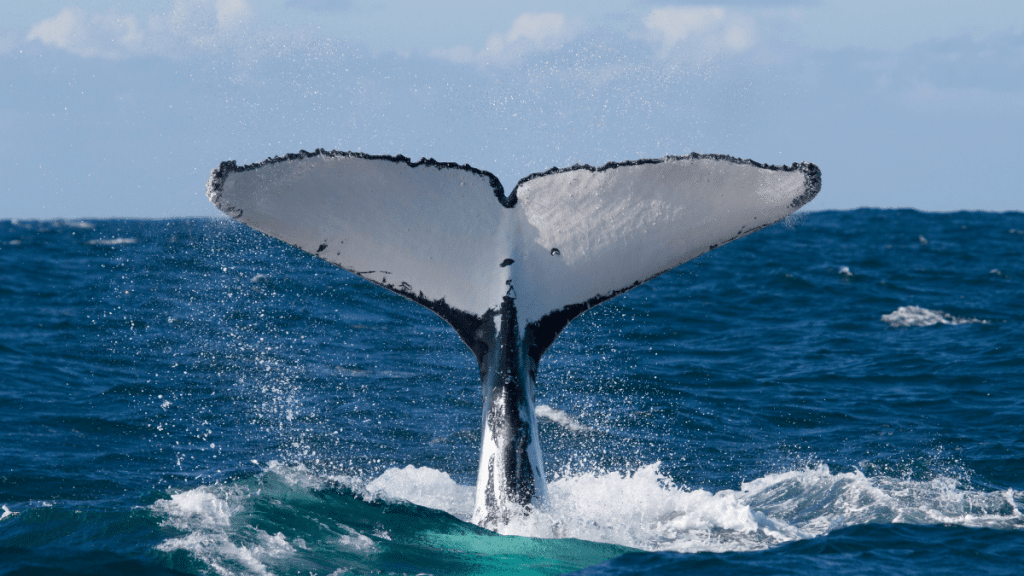
- Book in advance: Especially during peak season. Tours can sell out quickly, especially in hotspots like Hervey Bay and Jervis Bay.
- Dress appropriately: Even sunny days on the water can be cold. Wear layers, and bring a waterproof jacket just in case.
- Bring the right gear:
- Binoculars
- Camera with a zoom lens
- Sunglasses & sunscreen
- Motion sickness tablets (if you’re prone)
- Choose the right time of day: Mornings tend to have calmer seas, which means smoother rides and better visibility.
- Stay patient and alert: Whales don’t perform on cue. Part of the thrill is scanning the horizon and spotting the telltale spout or breach.
Whale Watching From Land: Best Lookouts
Not into boats? No worries! Plenty of Aussie coastlines offer fantastic whale viewing from land. Some standout spots:
- Cape Byron Lighthouse, NSW
- The Gap, Albany, WA
- Head of Bight, SA – where cliffs meet deep blue ocean
Cape Solander, Sydney, NSW – with volunteer whale counters! - Logans Beach, VIC
- Eaglehawk Neck, TAS
Bring a picnic, grab a pair of binoculars, and enjoy the show!
Whale Conservation in Australia
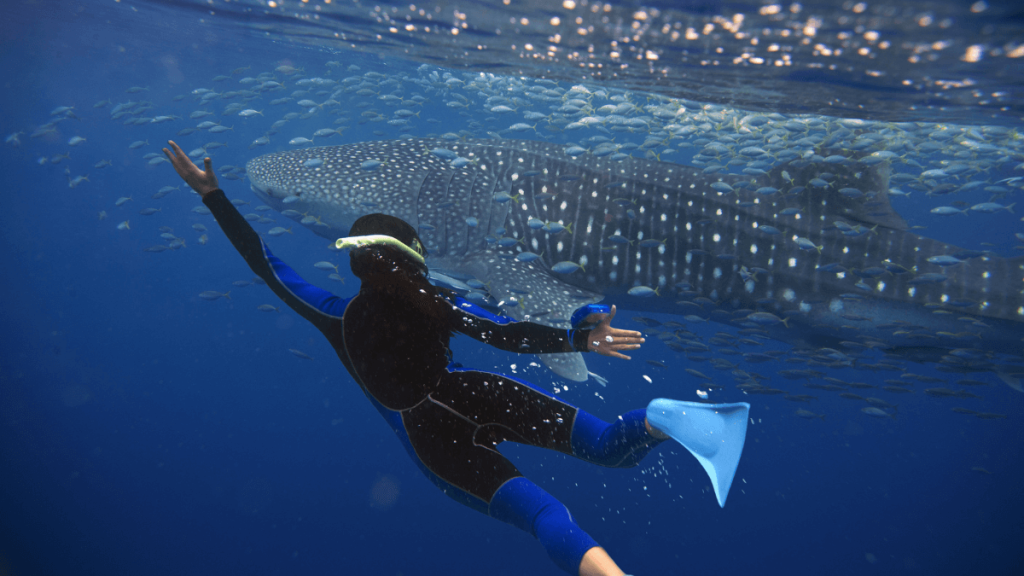
Whale protection is a worldwide leader in Australia. Here in 1978, commercial whaling was outlawed; since then, the whale population—especially that of humpbacks—has remarkably recovered.
Modern whale viewing promotes eco-tourism, aids marine research, and increases public knowledge of ocean condition.
You can do your bit by:
- Supporting ethical, eco-certified tours
- Reducing plastic use and ocean pollution
- Respecting wildlife by following guidelines (e.g., not flying drones near whales)
Final Thoughts: Why Whale Watching is a Must-Do in 2025
Seeing a whale close-up has a really poignant effect. Perhaps it’s their enormous weight, their intellect, or the old knowledge they seem to be carrying in their steady, elegant motions.
Whichever the motivation, whale watching in Australia is a personal connection to one of the most magnificent species on Earth, not only a bucket list activity. And with so many sites, trips, and experiences all throughout the nation, now is the ideal moment to see the migratory magic in 2025.
A whale watching tour is the kind of Aussie experience you will never forget whether your journey is a road trip, a weekend retreat, or simply a few quiet hours on the water.

